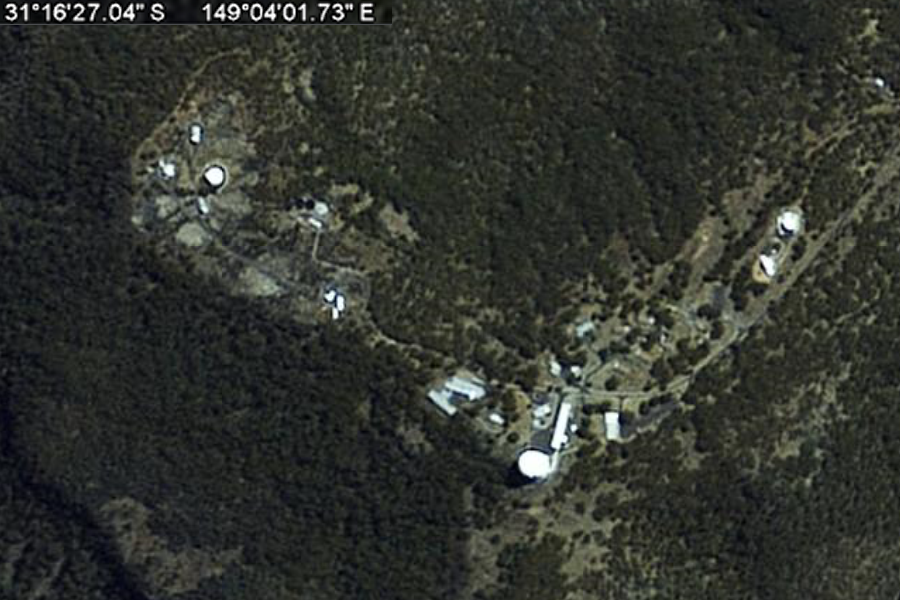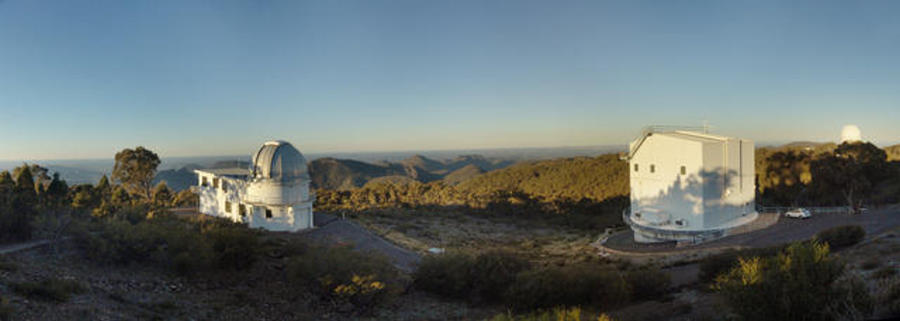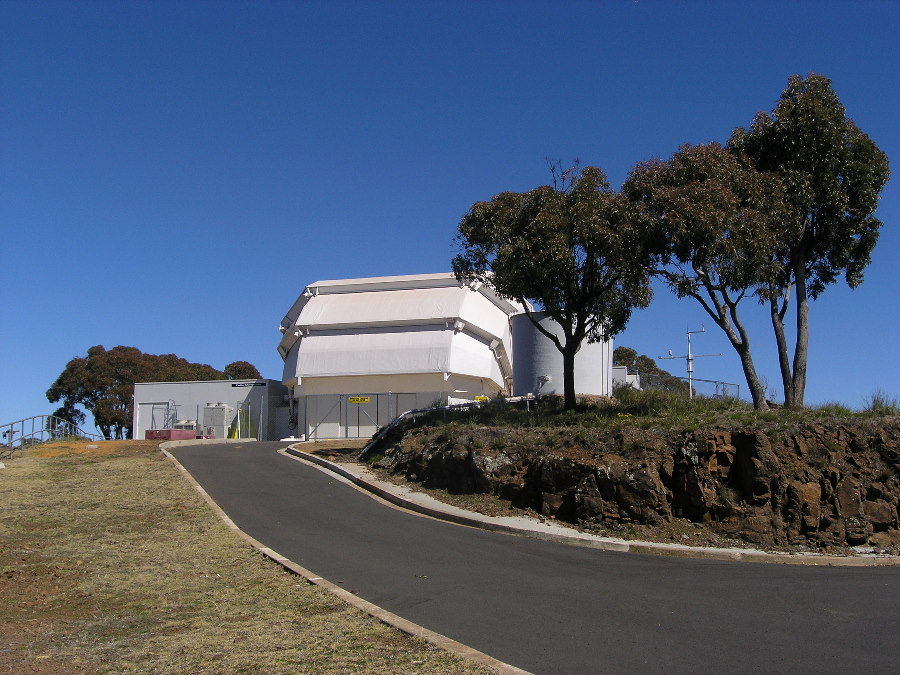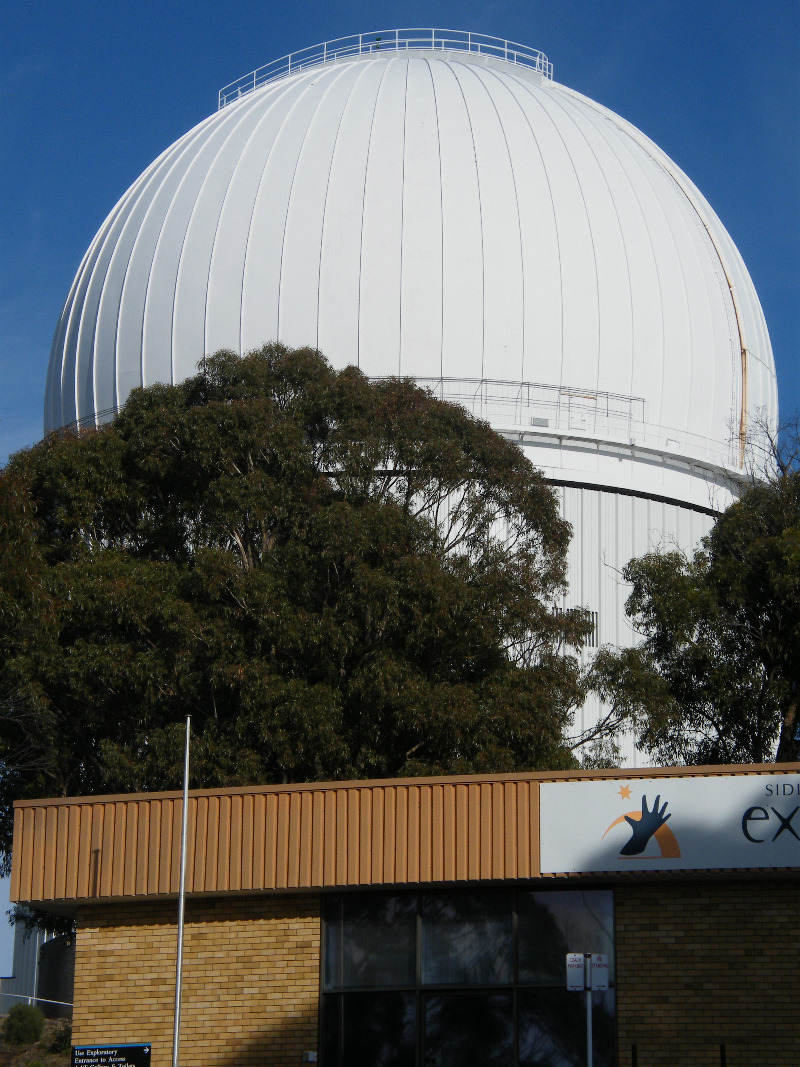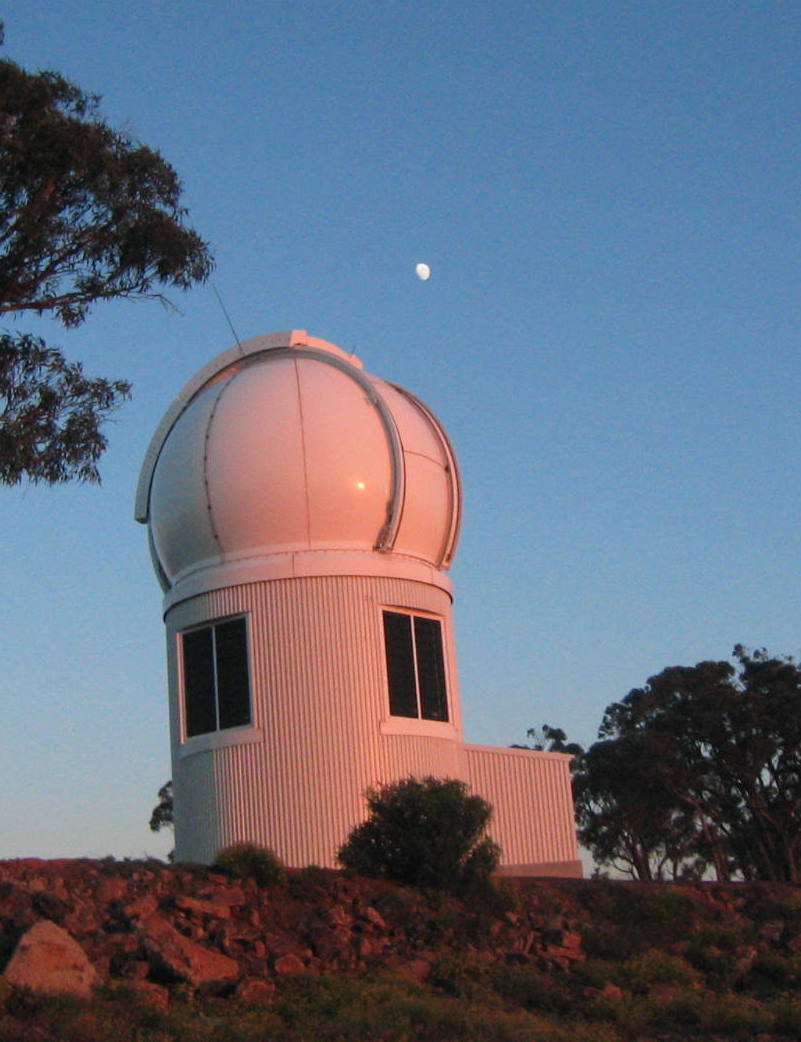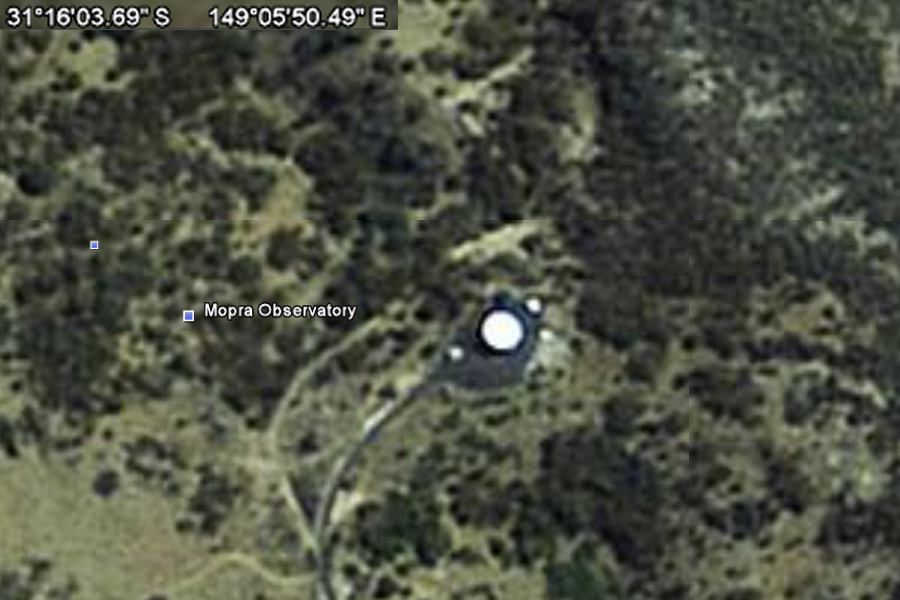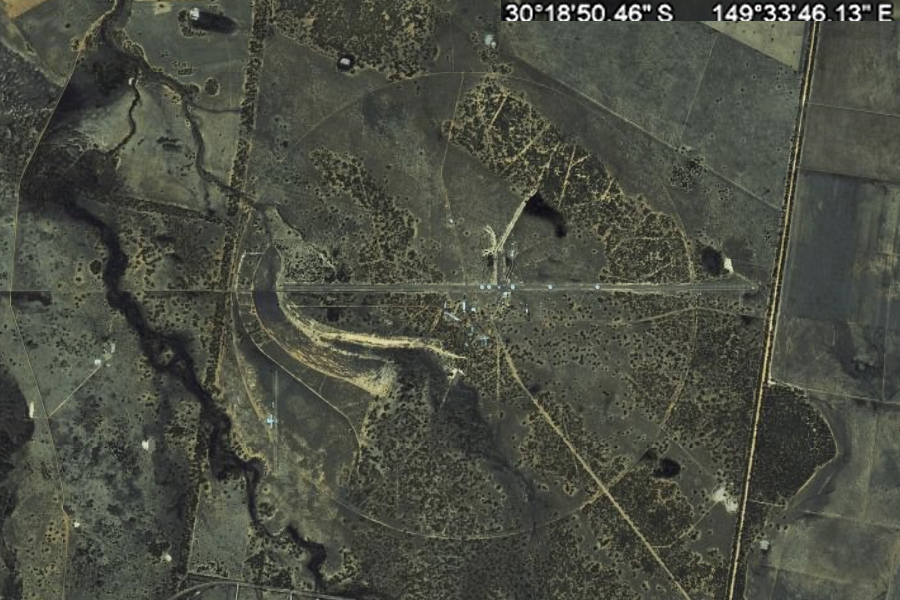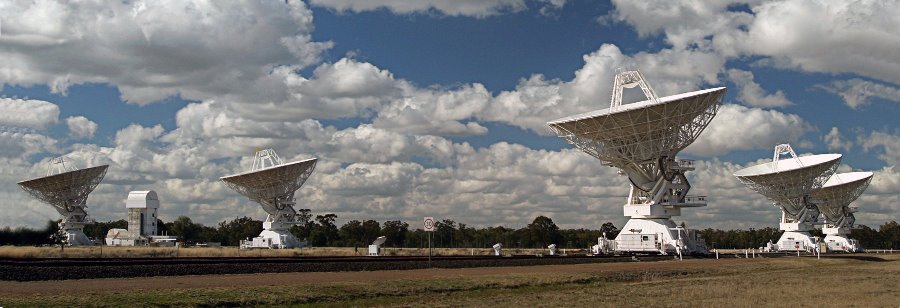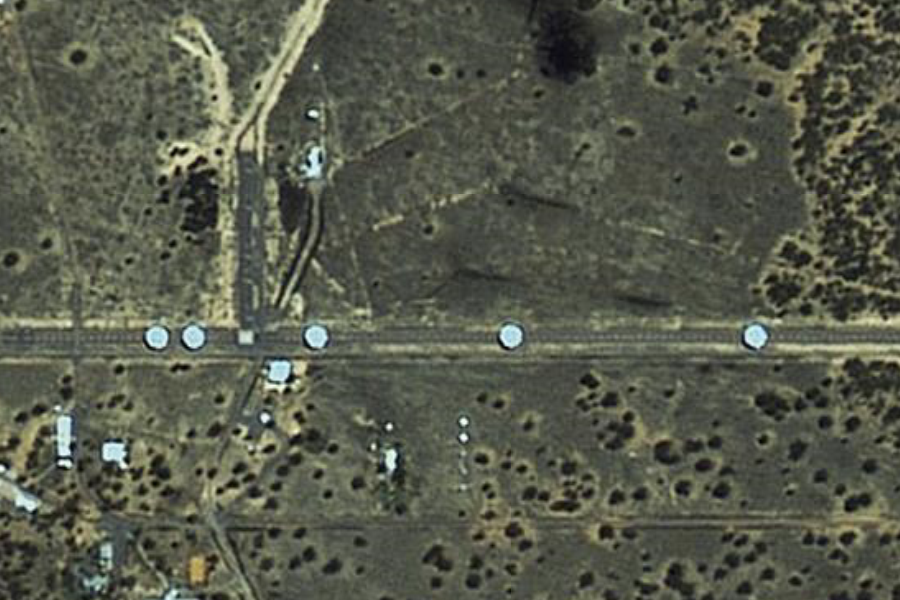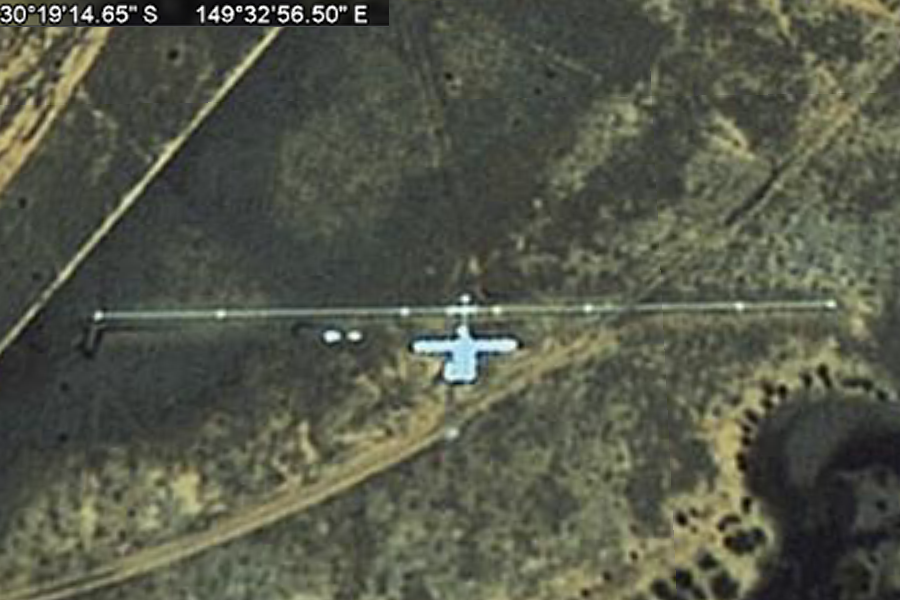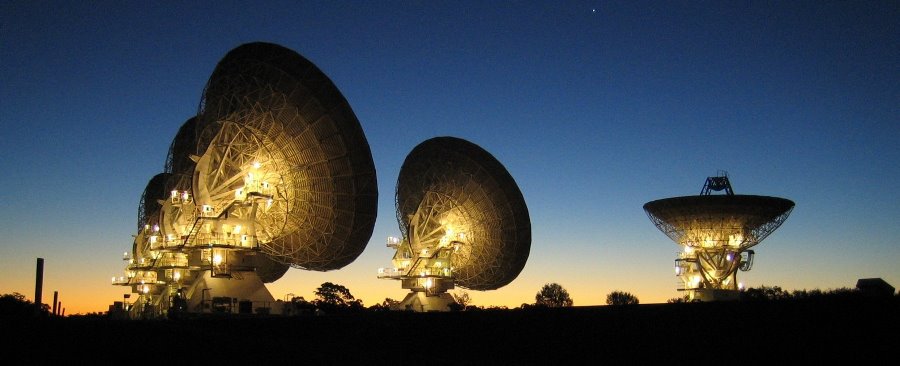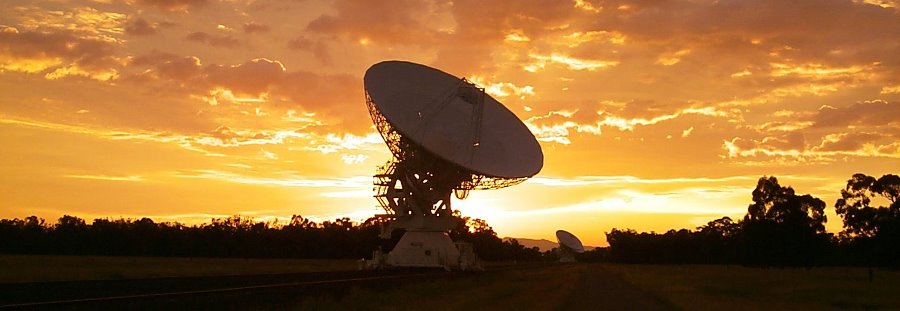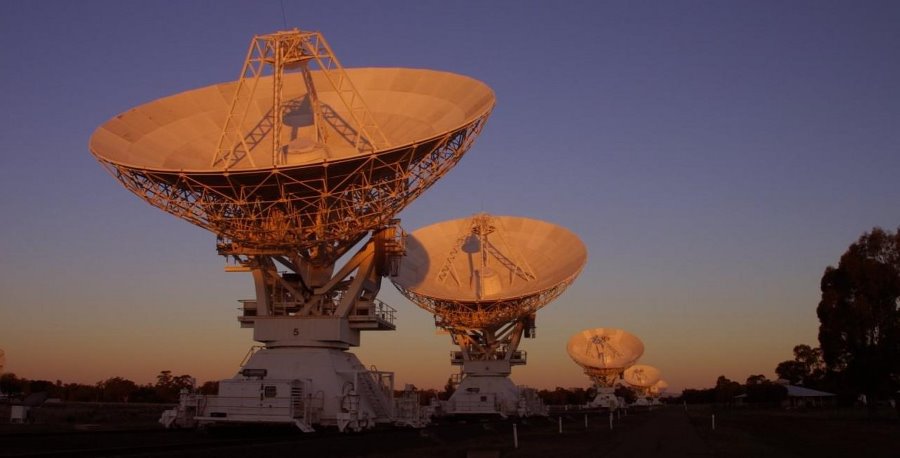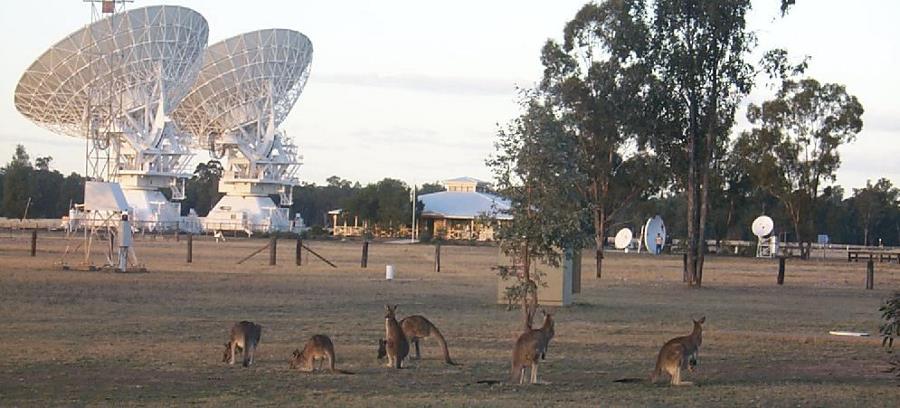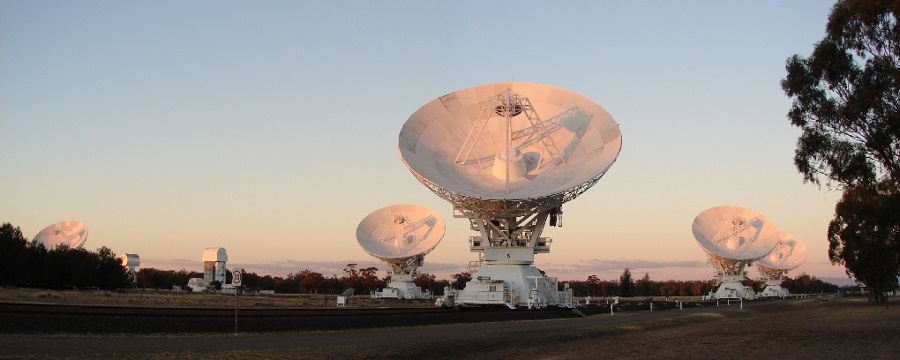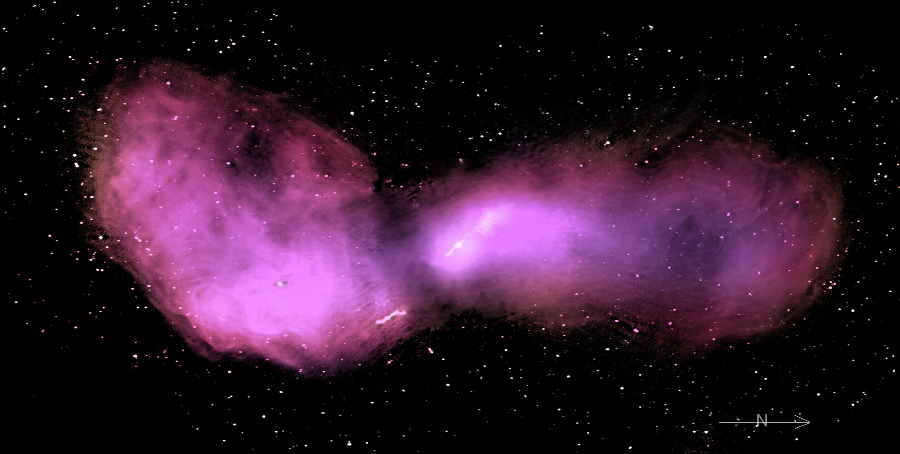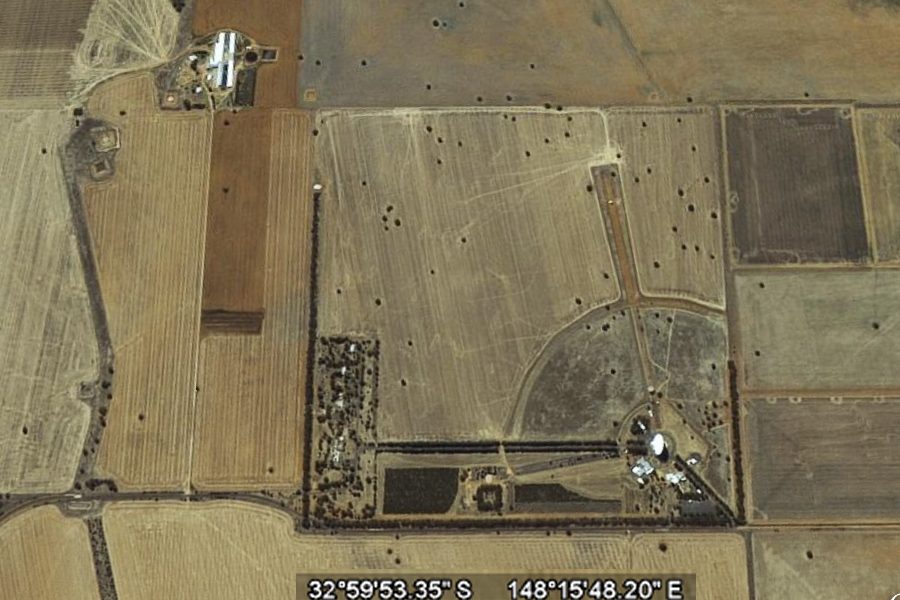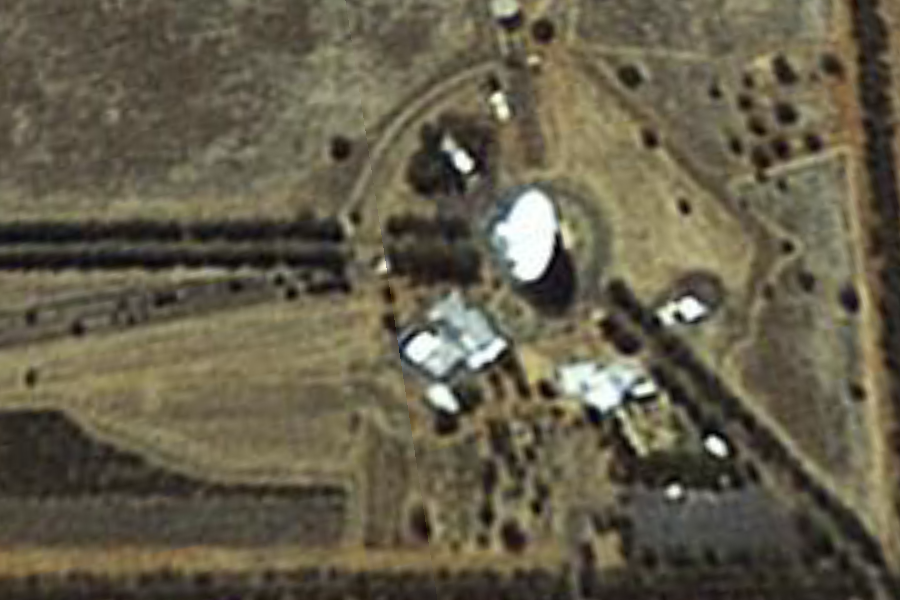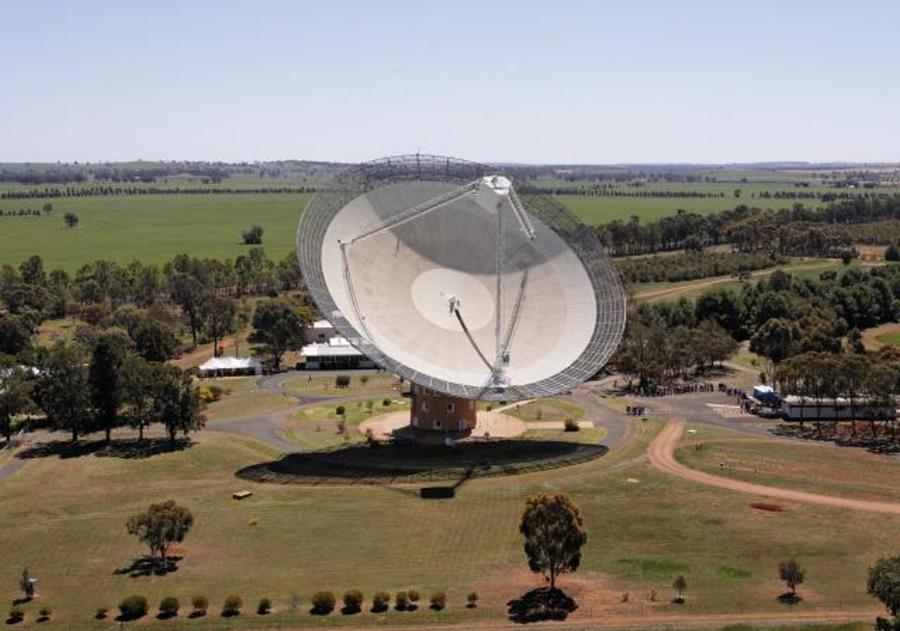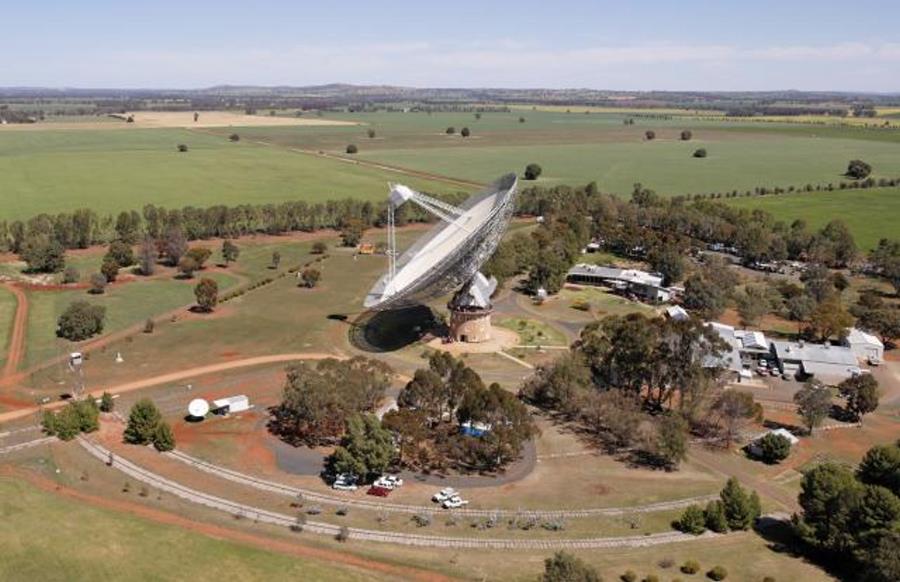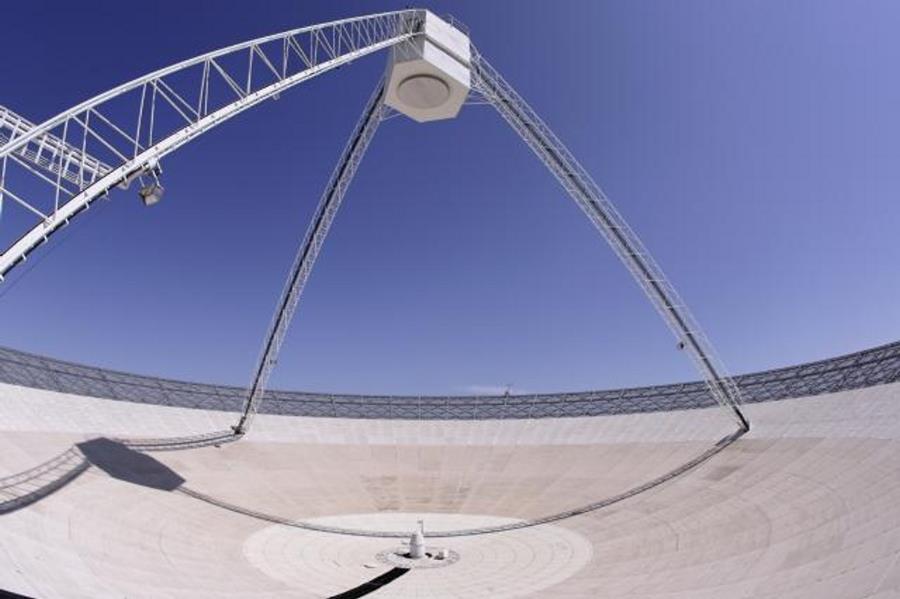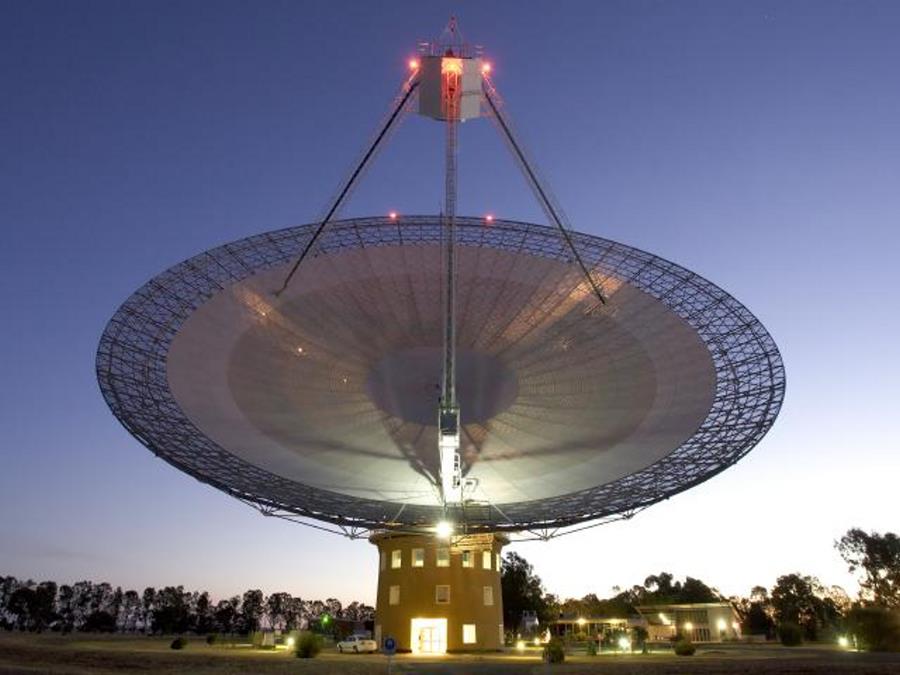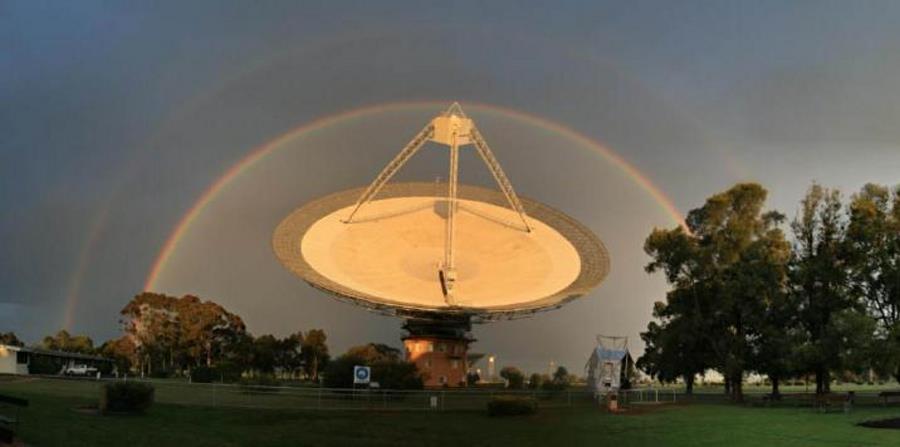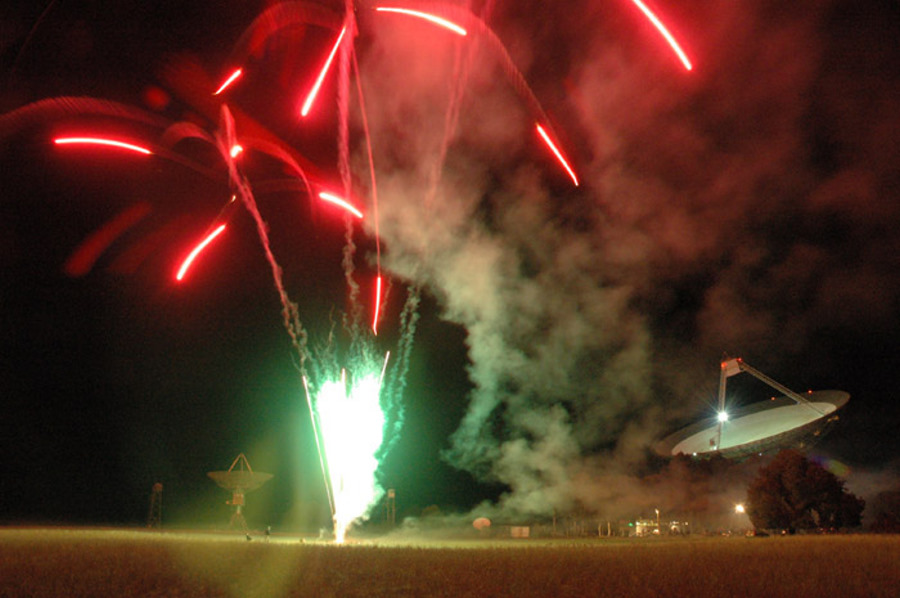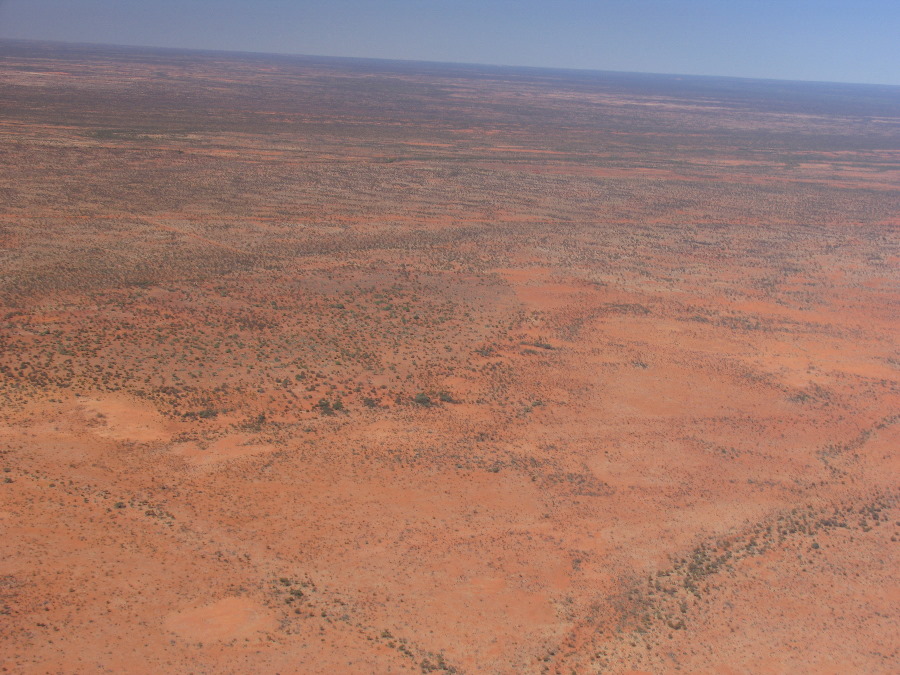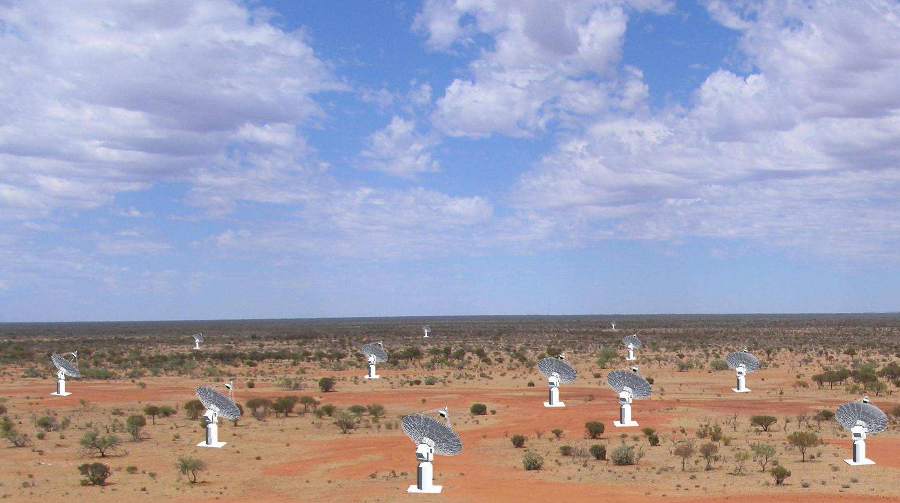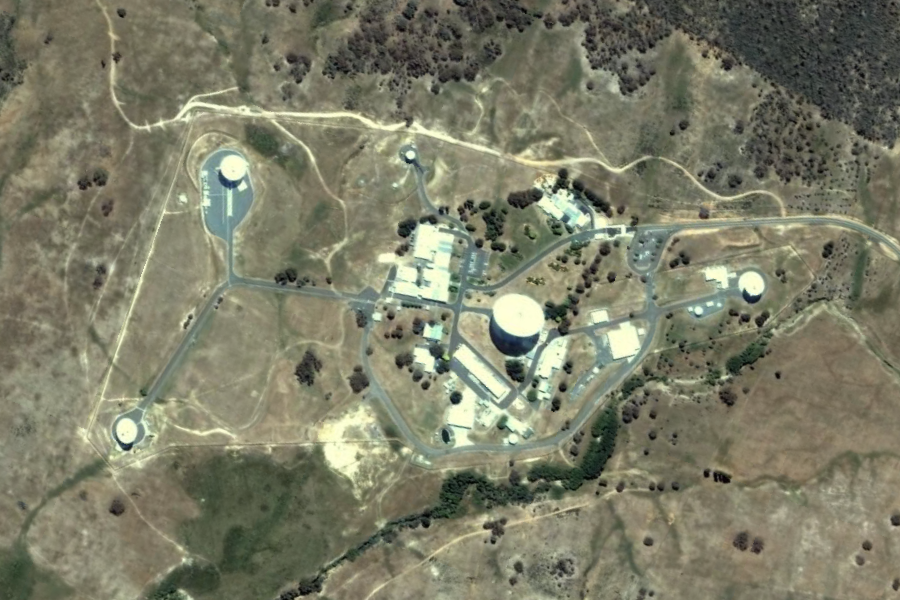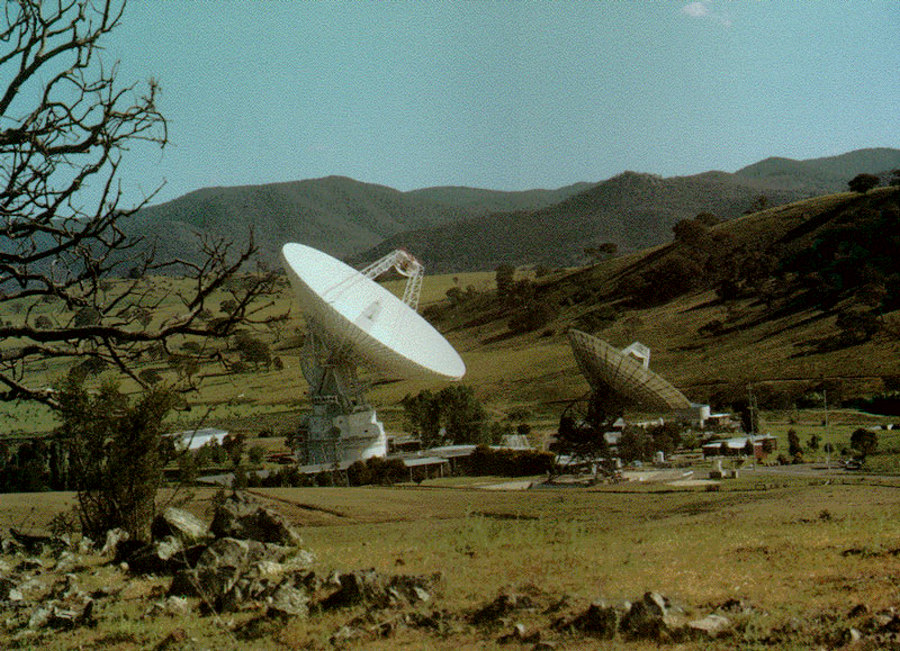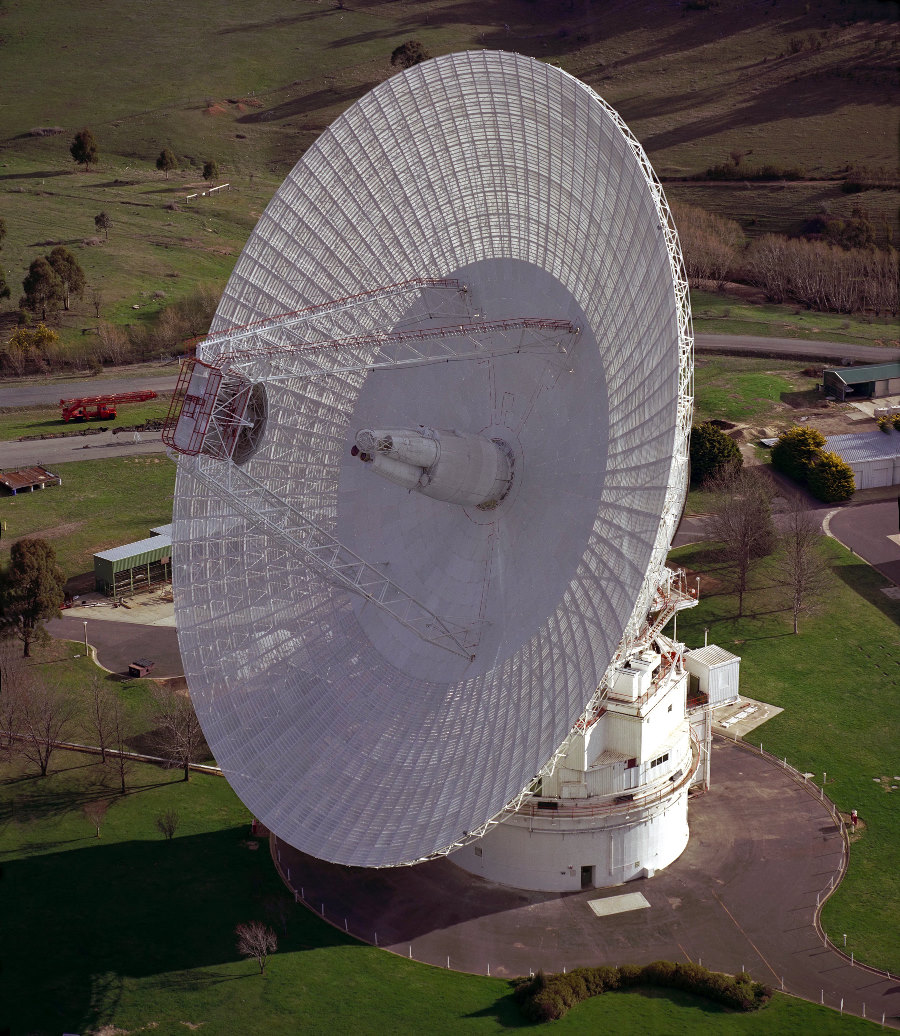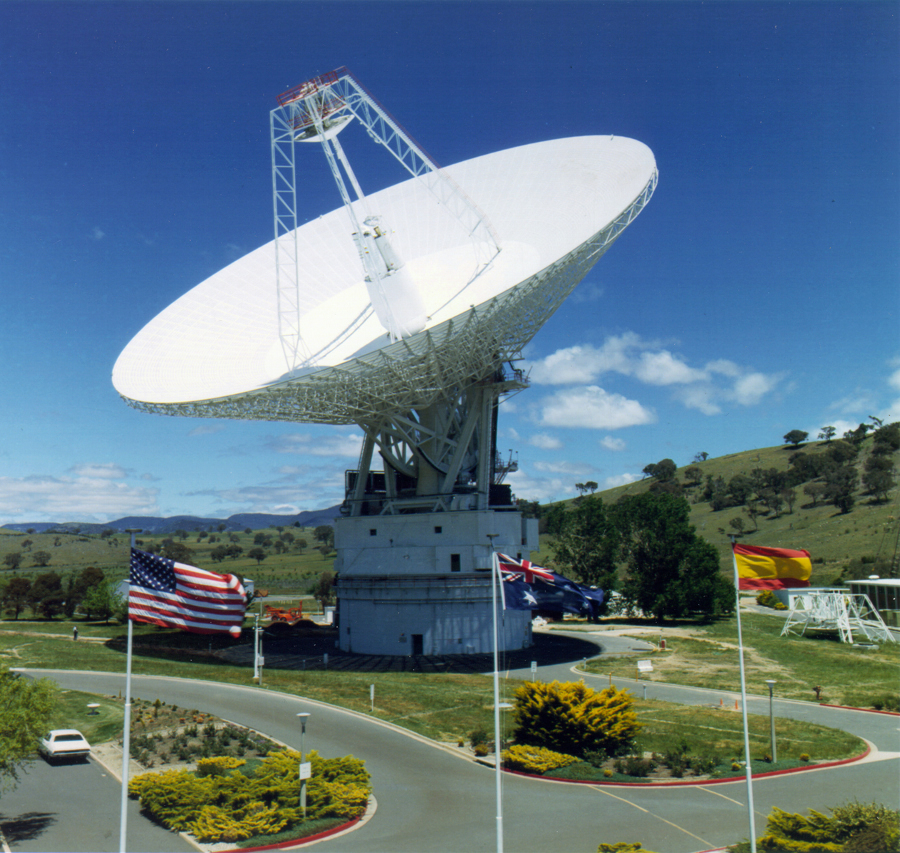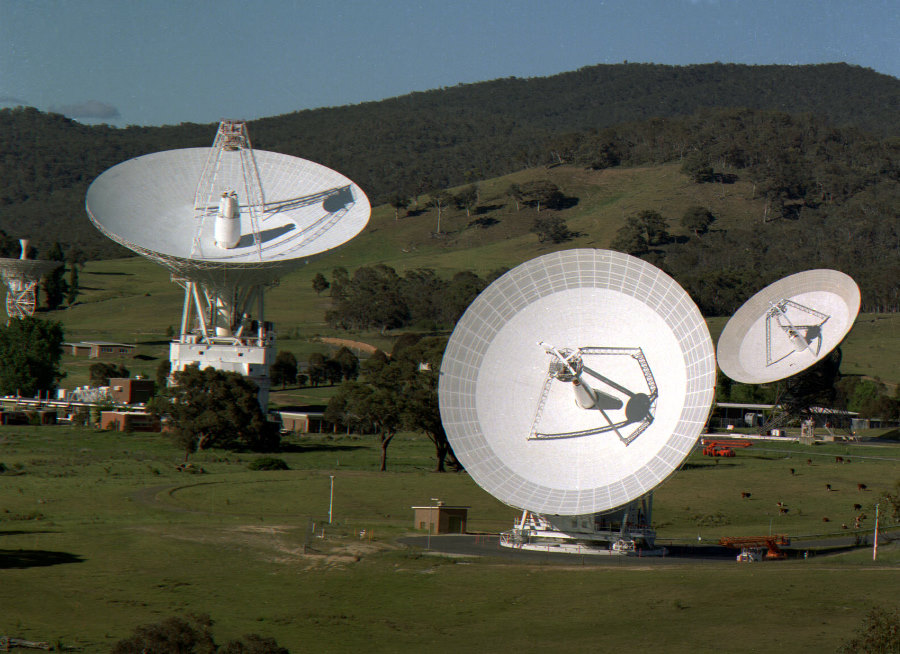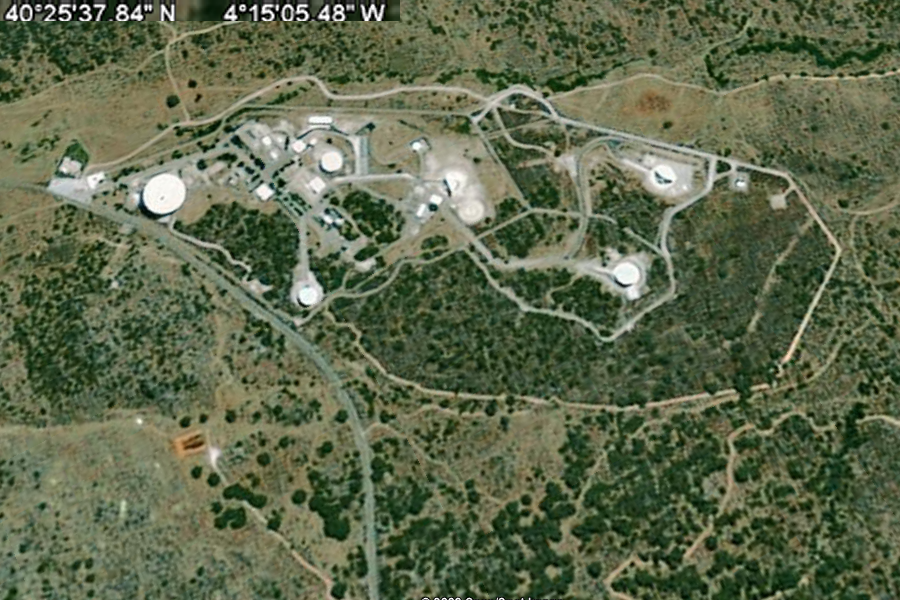|
Observatory |
||||||||||||
|
Coonabarabran, Australia 31° 16' 24" S, 149° 3' 52" E ..
... |
||||||||||||
|
..
..
Siding Spring Observatory Siding Spring Observatory near Coonabarabran, Australia, part of the Research School of Astronomy & Astrophysics (RSAA) at the Australian National University (ANU), incorporates the Anglo-Australian Telescope along with a collection of other telescopes owned by the Australian National University, the University of New South Wales, and other institutions. The observatory is situated 1,165 metres (3,820 ft) above sea level in the Warrumbungle National Park on Mount Woorat also known as Siding Spring Mountain. Siding Spring Observatory is owned by the Australian National University (ANU) and is part of the Mt Stromlo and Siding Spring Observatories research school. There are currently 12 telescopes on site. History The original Mt Stromlo Observatory was set up by the Commonwealth Government in 1924. After duty supplying optical components to the military in WWII, the emphasis on astronomical research changed in the late 1940s from solar to stellar research. Between 1953 and 1974, the 74-inch (1.9 m) reflecting telescope at Mt Stromlo was the largest optical telescope in Australia. Already in the 1950s, the artificial lights of Canberra had brightened the sky at Mt Stromlo to such an extent that many faint astronomical objects had been overwhelmed by light pollution. The Siding Spring site was selected by the ANU in 1962 from many other possible locations because of the dark and cloud-free skies. By the mid-1960s the ANU had set up three telescopes, together with supporting facilities such as sealed roads, staff accommodation, electricity and water. In 1984, the Prime Minister, Bob Hawke, opened the ANU's largest telescope, the low-cost and innovative 2.3 m aperture telescope, housed in a simple, co-rotating cuboid dome. Since the 1950s, and quite independently of developments at Siding Spring, the Australian and British governments had been negotiating about the construction of a very large telescope. When these negotiations finally came to fruition in 1969, the infrastructure of Siding Spring Observatory was already in place, and it was the obvious site at which to locate the 4-metre aperture Anglo-Australian Telescope (AAT). During the constructions of the AAT in the early 1970s, the British Science Research Council also built the UK Schmidt Telescope, 1 km to the NE of the AAT dome. The considerably wider field of view of the Schmidt optical design compliments the narrower field of the AAT, in that larger areas of sky may be surveyed more quickly. Interesting objects so discovered are then studied in greater detail on the larger instrument. In 1987, the Schmidt Telescope was amalgamated with the AAT. Siding Spring Observatory also houses telescopes from Korea, Las Cumbres Global Telescope Network and the University of New South Wales. In 1990, the earth-satellite tracking facility of the Royal Greenwich Observatory was closed down after 10 years of operation. |
||||||||||||
.....
.....
Telescopes at Siding Spring:
... |
||||||||||||
|
Mopra Observatory Australia Telescope Compact Array 31° 16' 3.69" S 149° 05' 50.49" E ..
Welcome to the Mopra Telescope The Mopra Observatory is part of CSIRO Australia Telescope National Facility. Mopra is a 22-m single-dish radio telescope located at the edge of the Warrumbungle Mountains near Coonabarabran, about 450 km north-west of Sydney. Mopra is situated at a latitude and longitude of -31:16:04, 149:05:59 and an elevation of 866 m. The telescope is primarily used for 3-mm spectroscopy and VLBI experiments. Mopra is operated remotely from a control desk at the Paul Wild Observatory near Narrabri, home of the CSIRO Australia Telescope Compact Array. Related Links:
|
||||||||||||
|
Australia Telescope Compact Array 30° 18' 50.46" S 149° 33' 46.13" E
Welcome to the Australia Telescope Compact Array The Australia Telescope Compact Array (ATCA), at the Paul Wild Observatory, is an array of six 22-m antennas used for radio astronomy. It is located about 25 km west of the town of Narrabri in rural NSW (about 500 km north-west of Sydney). It is operated by the Australia Telescope National Facility, a division of CSIRO, which also includes the ATNF Headquarters at Marsfield in Sydney, the Parkes Observatory and the Mopra Observatory near Coonabarabran. Related Links: |
||||||||||||
..
..
..
..
..
..
Credit: ATCA [click image for full size] ..
..
..
..
..
.. |
||||||||||||
|
Australia Telescope, Parkes Observatory 32° 59' 59.8" S, 148° 15' 44.3" E ..
..
Welcome to the Australia Telescope, Parkes Observatory The Parkes Observatory, is a 64-metre Telescope used for Radio Astronomy. It is located about 20 kilometres North of Parkes along the Newell Highway, which is approximately 380 kilometres West of Sydney. It is operated by the Australia Telescope National Facility, a division of CSIRO, which also includes the ATNF Headquarters at Marsfield in Sydney, the Compact Array and Mopra Observatory near Coonabarabran and the Australian Square Kilometre Array Pathfinder. Related Links: |
||||||||||||
..
..
..
..
..
....
.. |
||||||||||||
|
ASKAP (Australian Square Kilometre Array Pathfinder) -26° 42' 15.00", +116° 39' 32.00" ..
.. Credit: Swinburne Astronomy Productions. Design data provided by CSIRO ASKAP Overview What is the Australian Square Kilometre Array Pathfinder (ASKAP)? ASKAP will be a next-generation radio telescope incorporating novel receiver technologies and leading-edge ICT systems. ASKAP will be a world-class telescope in its own right as well as being a pathfinder instrument for the full Square Kilometre Array (see below). It will comprise an array of 36 antennas each 12m in diameter, capable of high dynamic range imaging and using wide-field-of-view phased array feeds. Who is involved in ASKAP? ASKAP is led by CSIRO ATNF in collaboration with scientists and engineers in Canada, the Netherlands, United Kingdom and Germany, as well as colleagues from Australian universities and industry partners. ASKAP will introduce a fourth telescope to CSIRO's suite of radio astronomy national facilities. ATNF has already begun restructuring its operations to meet the expanding maintenance and configuration workload, and will eventually centralise control of all four observatories into a single operations centre.
Why build ASKAP? SKAP will be a telescope that can capture radio images with unprecedented sensitivity over large areas of sky. With a large instantaneous field-of-view ASKAP will be able to survey the whole sky vastly faster than is possible with existing radio telescopes. In one week ASKAP will generate more information than is currently contained on the whole World Wide Web; in one month it will generate more information than is contained in the world's academic libraries. This combination of survey speed and sensitivity will allow astronomers to answer some fundamental questions about the creation and early evolution of our Universe, and to test theories of cosmic magnetism and predictions from Einstein's theory of relativity. ASKAP is a next generation radio telescope on the strategic pathway towards the staged development of the SKA. ASKAP has four goals, namely:
The main cluster (or array) of ASKAP antennas will be built in a remote outback region of Western Australia, with construction due to start in late 2009. This region has been identified as ideal for a new radio observatory. The population is very small and hence there is a lack of man-made radio signals that would otherwise interfere with weak astronomical signals. The remarkably radio-quiet site in Western Australia is in the process of being developed as the Murchison Radio-astronomy Observatory (MRO) and is the Australian SKA candidate core site.
ASKAP timeline The ASKAP project is transitioning from a phase of research and development, with the prototype phased array feed (also known as the focal plane array) currently being tested and refined on the 12m testbed antenna at Parkes. ASKAP will then move towards a "beta" phase - the Boolardy Engineering Test Array (BETA) will consist of six antennas operating at the Murchison Radio-astronomy Observatory (MRO) by 2011. CSIRO plans that the full ASKAP system, comprising an estimated 36 antennas onsite at the MRO, will be fully operational by 2013. ASKAP and the International SKA project The SKA is under development by a consortium of 19 countries and will be an international mega-science project. Australia is one of two regions short-listed as the location of the SKA; Southern Africa is the other. In addition to carrying out cutting-edge science ASKAP will pioneer and test revolutionary new technologies in areas of electrical engineering, digital systems, computing and signal transport, and provide key results and techniques to the international SKA design and development effort. ASKAP will trial green-energy power generation systems, as well as showcase the outstanding characteristics of the MRO site and the potential for the SKA to be located in Austalia. ASKAP is the primary development project under "Team Australia's" SKA (AuSKA) strategy to influence the SKA project to establish the SKA in Australia and use the generated wide-field-of-view technology. For more information on AuSKA
and the SKA visit the www.ska.gov.au
or www.skatelescope.org web
pages, or contact gabby.russell@csiro.au
Related Links:
|
||||||||||||
|
Canberra Deep Space Communication Complex Tidbinbilla, Australia 35° 24' 05" S, 148° 58' 54" E ..
..
NASA constructed an additional 64-meter antenna (DSS 43) at Tidbinbilla, Australia, in order to provide continuous coverage of spacecraft missions requiring the support of large- aperture antennas. Improvements in technology (construction of more stable and better filtered transmitters and receivers; the shaping of antenna feed optics to eliminate virtually all spillover; and the move to a higher operating frequency, which restricted to a greater degree the direction of the antenna beam) had reduced the possibility of interference from collocated antennas. NASA and its partner agency were thus able to place the new antenna in the same valley as DSS 42. This collocation in turn enabled operating the two antennas from a common control room. Collins Radio Company was the prime contractor. Under overall JPL management, the firm and its Australian subcontractors began construction of the Tidbinbilla antenna (on the left in the photo) in November 1969 and completed their work in July 1972. Installation of the subreflector, multicone, and control-room electronics followed, and during the period of subsystem testing the antenna supported the Apollo 17 manned lunar landing mission (December 1972) as a backup to the Parkes radio telescope. SOURCE: NASA Deep Space Network Welcome to Tidbinbilla The radio telescopes at Tidbinbilla are operated by the Canberra Deep Space Communication Complex, part of NASA's Deep Space Network. As part of the Host Country agreement with NASA, a fraction of the time on the Tidbinbilla DSS-43 70-m and DSS-34 34-m antennas is available to the Australian astronomical community. Since January 2003, the Australia Telescope National Facility has accepted applications for service observations with the 70-m antenna. From the 2007APRS semester onwards, single-dish applications for the DSS-34 34-m antenna have also been accepted. The Tidbinbilla 70-m (DSS43) antenna and the 34-m (DSS-34) antenna are also used together with the Long Baseline Array and other radio telescopes, for Very Long Baseline Interferometry. Jimi Green is the ATNF Friend for Tidbinbilla. If you have any comments or questions regarding single-dish observations at Tidbinbilla, please email: James.Green [at] atnf.csiro.au SOURCE: CSIRO Tidbinbilla Related Links: |
||||||||||||
The Canberra Deep Space Communications Complex, located outside Canberra, Australia, is one of the three complexes which comprise NASA's Deep Space Network. The other complexes are located in Goldstone, California, and Madrid, Spain.
..
.. |
||||||||||||
|
Robledo de Chavela, Spain 40° 25' 37.84" N, 4° 15' 05.48" W ..
Madrid Deep Space Communication Complex The Madrid Deep Space Communications Complex (MDSCC) is a ground station located in Robledo de Chavela, Spain, and operated by Ingenieria y Servicios Aeroespaciales, S.A. (INSA) for Instituto Nacional de Técnica Aeroespacial. Deep Space Network It is part of NASA's Deep Space
Network run by the Jet Propulsion Laboratory. [1] The facility contributes
to the Deep Space Network's ability to provide the vital two-way communications
link that guides and controls remote control drones and receives the images
and new scientific information they collect. This complex is one of three
Deep Space Network complexes in the world; the others are the Goldstone
Deep Space Communications Complex located in California, near the city
of Barstow, and the Canberra Deep Space Communication Complex in Australia
which is close to the city of Canberra.
The antennas and data delivery systems make it possible to:
The complex has five antennas, called DSS-54, DSS-55, DSS-63, DSS-65 and DSS-66
Concerned about the
political climate in South Africa during the 1960s, NASA looked for a
suitable location on the same longitude to build a new Deep Space
Station. In Robledo de Chevala, NASA found the ideal location. Deep
Space Station 61 (DSS-61) was completed in 1965 in time to assist in the
Mariner 4 mission. The Manned Space Flight Network (MSFN) upgraded
DSS-61 to provide backup for the Apollo Program in the late 1960s and in
1980 the antenna was upgraded from 26 meters (85 feet) to 34 meters
(111 feet) in diameter. In 1999, the antenna was retired and repurposed
as the Proyecto Academico con el Radio Telescopio de NASA en Robledo
(PARTNeR) which allows students and astronomy associations to control
the antenna and share information found with the antenna through the
internet.
Last Updated: Sept. 4, 2015 Editor: Thuy Mai NASA |
||||||||||||
| FAIR USE NOTICE: This page contains copyrighted material the use of which has not been specifically authorized by the copyright owner. Pegasus Research Consortium distributes this material without profit to those who have expressed a prior interest in receiving the included information for research and educational purposes. We believe this constitutes a fair use of any such copyrighted material as provided for in 17 U.S.C § 107. If you wish to use copyrighted material from this site for purposes of your own that go beyond fair use, you must obtain permission from the copyright owner. | ||||||||||||
|
|

